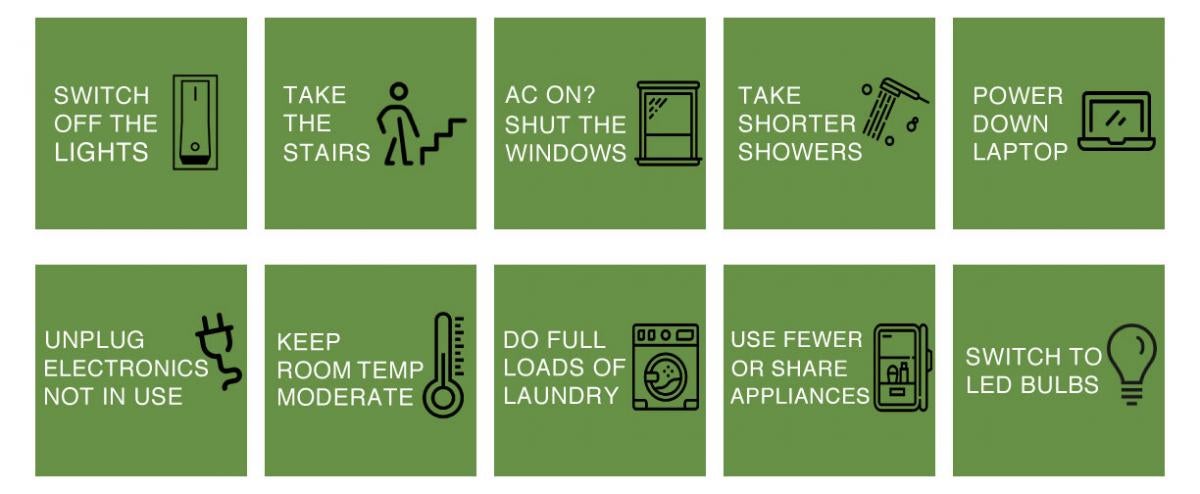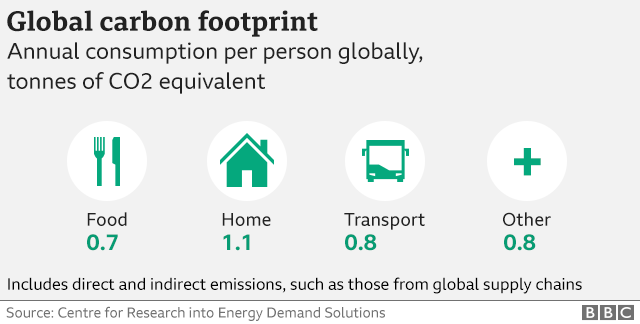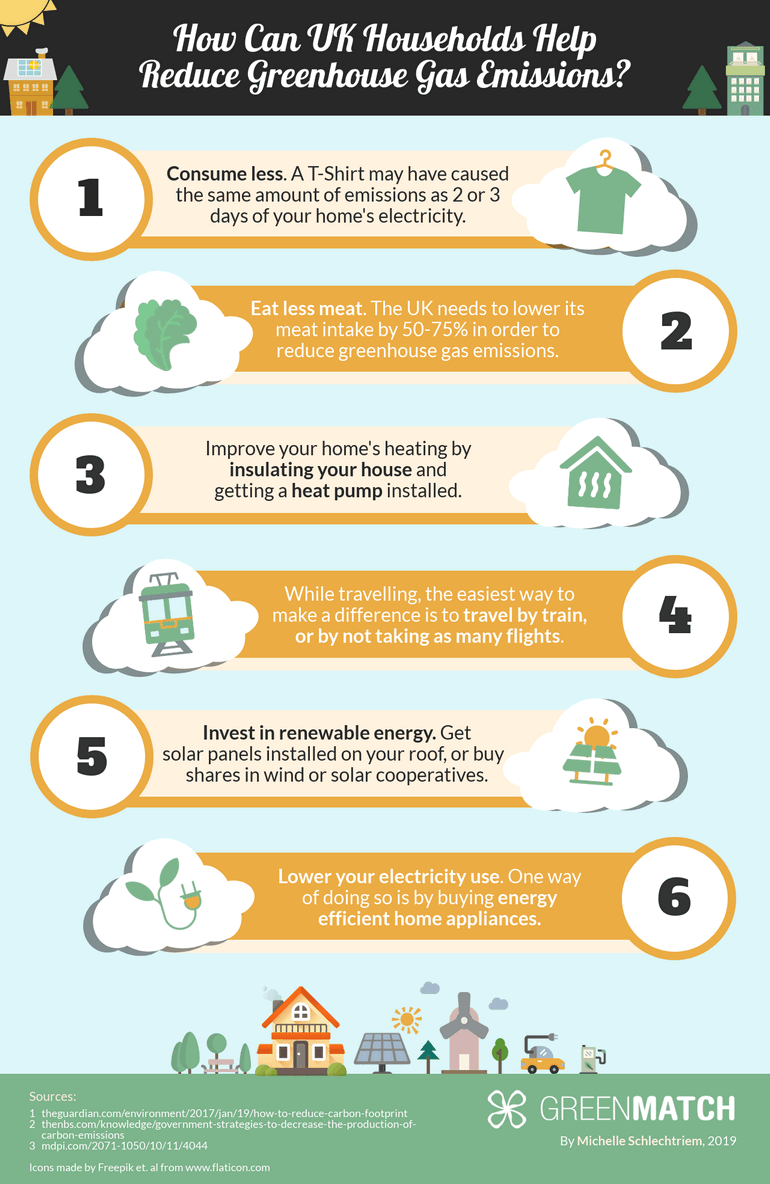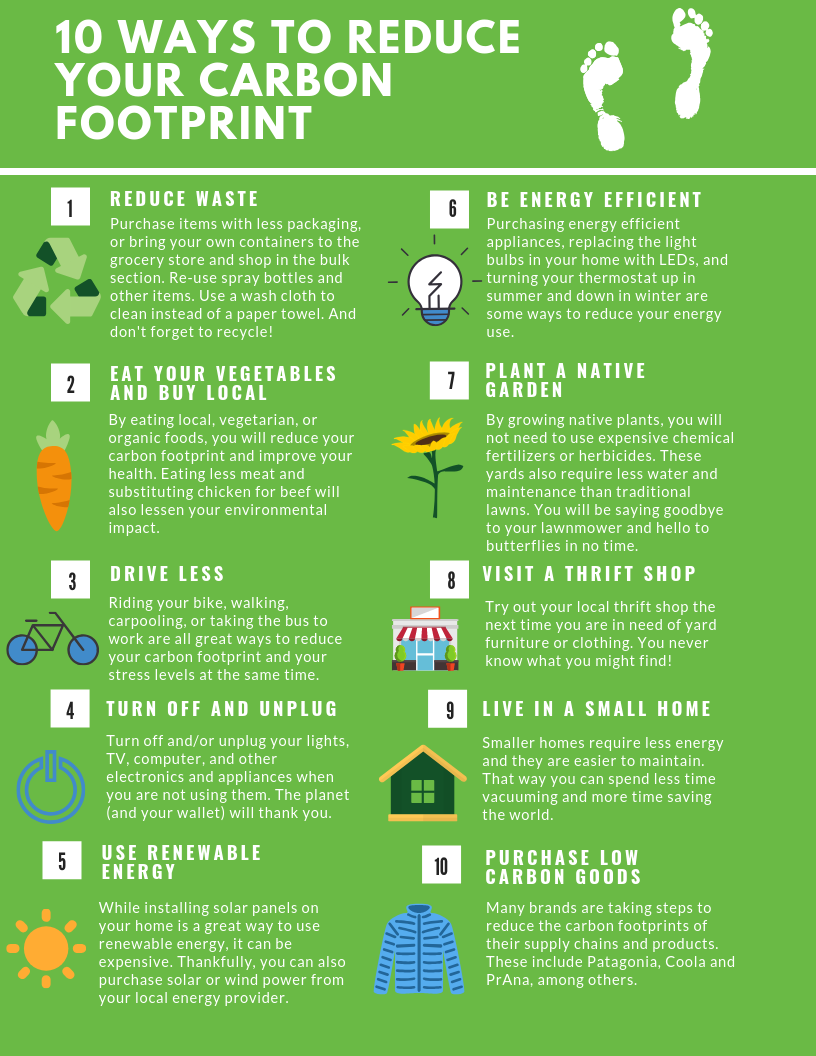Transport is responsible for nearly 30 of the EUs total CO2 emissions of which 72 comes from road transportation. How big reductions in CO2-emissions are needed to limit the rise in global temperatures.
20 Ways To Reduce Your Carbon Footprint
A 45 reduction in emissions from 2010 implies an allowance of about 5950 mtoe of fossil fuel consumption for 2030 and a reduction of about 5800 mtoe from 2018.

How much do we have to reduce carbon emissions. The best way to avoid it is to fly less. Meeting a 15-degree temperature target almost certainly relies on it even with aggressive emissions reduction efforts starting now. According to the UN Environment Programme emissions must fall by 25 before 2030 to keep increases within 2 degrees by 2100.
Luckily travel by train is not only more leisurely but way better for the planet too skipping the plane and taking the train to Paris produces 90 less carbon emissions. Choose organic and local foods that are in season. Many countries across Europe for example have much lower emissions than the US Canada or Australia.
Companies have to buy them through auctions. In 2017 emissions in Portugal are 53 tonnes. At the same time CO2 emissions would be reduced by 80 over todays natural gas power plants and the cost of generating a kilowatt-hour of electricity would be 78 cents in 2027 in todays dollars just 12 cents more than todays average cost.
Theres no way around it flying causes huge amounts of carbon emissions. They need to be 32 gigatonnes lower for the 15C goal. And 58t per person in the UK.
The European Emissions Trading System is the worlds first major carbon market. Check out our infographics to find out. The EUs Emissions Trading System ETS aims to reduce the industrys carbon emissions by obliging companies to hold a permit for each tonne of CO2 they emit.
As part of efforts to reduce CO2 emissions the EU has set a goal of reducing emissions from transport by. The UN Environment Programme said that even if nations meet their current emissions reduction pledges carbon emissions in 2020 will be eight to 12 gigatonnes above the level required to avoid a costly nosedive in greenhouse gas output. This is followed by driving a battery electric car - 195 tonnes of CO2 equivalent.
In fact some European countries have emissions not far from the global average. To limit temperatures annual emissions in 2030 need to be 15 gigatonnes of CO2 equivalent lower than current unconditional NDCs imply for the 2C goal. How much do we need to reduce CO2-emissions.
Thats offsetting the same amount of carbon as 34 acres of US forests. You can start by joining Meatless Mondays. WWF is working to secure effective energy efficiency and renewable heat policy to ensure we reduce the emissions coming from our homes to meet UK carbon budgets.
This is followed by driving a battery electric car - 195 tonnes of CO2 equivalent. And these offsets make us a carbon-neutral company. 55 reductions before 2030 are needed to limit the increase to 15 degrees.
Eating only locally grown food for one year would save the greenhouse gas equivalent of driving 1000 miles but eating just one vegetarian meal a week for a. James Hansen perhaps the worlds leading climate scientist has suggested we need to cut not just emissions but also atmospheric concentrations down to the equivalent of 350 parts per million. Homes currently account for around 20 of our emissions yet action to reduce these emissions has been slow with 21 million homes currently below EPC rating C meaning they are not efficient.
Every day that you forgo meat and dairy you can reduce your carbon footprint by 8 poundsthats 2920 pounds a year. By contrast a path that would prevent a rise of much more than 15C would require annual emissions to fall by about 50 between now and 2030 and reach net. In the Lower GHG scenario carbon pollution is reduced by 550 million metric tons annually in 2050--equivalent to the emissions from 100 million of todays passenger cars.
There are some incentives to boost innovation in the sector. Top of the list is living car-free which saves an average of 204 tonnes of CO2 equivalent per person annually. Top of the list is living car-free which saves an average of 204 tonnes of CO2 equivalent per person annually.
 Reducing Carbon Footprint Google Search Carbon Footprint Environmental Awareness Footprint
Reducing Carbon Footprint Google Search Carbon Footprint Environmental Awareness Footprint
 Sf To Declare Climate Emergency Bolster Plans To Reduce Carbon Emissions The San Francisco Examiner
Sf To Declare Climate Emergency Bolster Plans To Reduce Carbon Emissions The San Francisco Examiner
 Simple Tips To Reduce Your Carbon Footprint Sustainability At Georgetown University Georgetown University
Simple Tips To Reduce Your Carbon Footprint Sustainability At Georgetown University Georgetown University
 How To Reduce Your Carbon Footprint A Year Of Living Better Guides The New York Times
How To Reduce Your Carbon Footprint A Year Of Living Better Guides The New York Times
 Climate Change Top 10 Tips To Reduce Carbon Footprint Revealed Bbc News
Climate Change Top 10 Tips To Reduce Carbon Footprint Revealed Bbc News
 Climate Change Top 10 Tips To Reduce Carbon Footprint Revealed Bbc News
Climate Change Top 10 Tips To Reduce Carbon Footprint Revealed Bbc News
 Reducing Ghg Emissions In The Uk With 57 By 2030 Greenmatch
Reducing Ghg Emissions In The Uk With 57 By 2030 Greenmatch
 How Simple Lifestyle Changes Can Reduce Your Carbon Footprint Help The Environment Accuweather
How Simple Lifestyle Changes Can Reduce Your Carbon Footprint Help The Environment Accuweather
20 Ways To Reduce Your Carbon Footprint
20 Ways To Reduce Your Carbon Footprint
11 Ways To Reduce Your Carbon Footprint Wildlife Works Blog
 Do You Know Your Carbon Footprint A Case Study Infographics
Do You Know Your Carbon Footprint A Case Study Infographics
 Five Ways To Reduce Your Carbon Footprint Connecticut Public Radio
Five Ways To Reduce Your Carbon Footprint Connecticut Public Radio


No comments:
Post a Comment
Note: Only a member of this blog may post a comment.